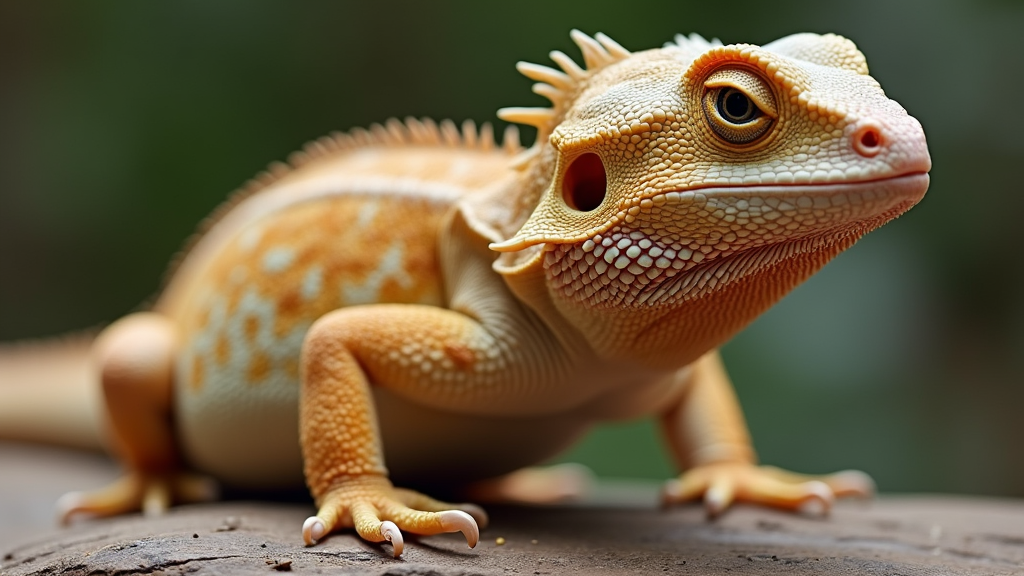Understanding Bearded Dragon Growth Stages
Bearded dragons have become one of the most beloved exotic pets across the UK, and for good reason. These intriguing reptiles are not only fascinating to watch but are relatively easy to care for, making them a perfect pet for both beginners and experienced reptile enthusiasts. In this comprehensive guide, we’ll explore the various growth stages of bearded dragons, ensuring you know what to expect at each phase of their development.
The Growth Stages of Bearded Dragons
Understanding the growth stages of your bearded dragon is crucial for providing appropriate care at each phase. This section will delve into the three main growth stages: the juvenile stage, the sub-adult stage, and the adult stage. Each stage offers unique challenges as well as rewards.
The Juvenile Stage (0-6 Months)
Rapid Growth and Development
During the juvenile stage, bearded dragons experience rapid growth, often doubling or even tripling in size. It’s during this time that they lay the foundation for their future health and well-being.
- Diet: High in protein, primarily consisting of insects like crickets and mealworms. Fresh greens should also be introduced early on.
- Habitat: Maintain a well-ventilated terrarium with a temperature gradient of 22-29°C, with a basking spot reaching up to 35-40°C.
- Behaviour: Juveniles are generally very active and inquisitive.
Important Milestones
By the end of the juvenile stage, your bearded dragon should weigh anywhere from 20 to 100 grams and measure between 8 and 24 inches in length. Make sure to consistently monitor their weight and length to ensure they’re growing properly.
The Sub-Adult Stage (6-18 Months)
Slowing Down
As your bearded dragon transitions into the sub-adult stage, growth begins to slow down but is still significant.
- Diet: Balance between insects and greens, slowly increasing the proportion of vegetables to about 50% of the diet.
- Habitat: Similar to the juvenile stage, but ensure the space is sufficient to accommodate a larger size.
- Behaviour: Slightly less active but still curious and engaging.
Health Concerns
It’s particularly essential to ensure proper calcium and vitamin D3 intake during this stage to prevent metabolic bone disease. A UVB light should be a permanent fixture in the terrarium.
The Adult Stage (18 Months and Beyond)
Full Maturity
At around 18 months, your bearded dragon will reach full maturity. This does not mean your responsibilities end but rather shift towards maintaining their health and happiness.
- Diet: Primarily greens with occasional protein. Bearded dragons should now have a diet consisting of about 80% vegetables and 20% insects.
- Habitat: By now, your dragon may require a larger enclosure to move around freely.
- Behaviour: Adults are often more subdued and spend a significant amount of time basking.
Final Size
By adulthood, bearded dragons typically measure between 16 to 24 inches and weigh about 300 to 500 grams. The size can vary depending on the species and individual genetics.
Tips for a Healthy Bearded Dragon at Each Stage
Regular Vet Visits
Regardless of your dragon’s age, regular vet visits are essential. Exotic pets require specialised care, and a vet can offer invaluable advice tailored to your bearded dragon’s specific needs.
Proper Lighting and Heating
UVB lighting is non-negotiable. It supports bone health and overall well-being. Similarly, maintaining a proper temperature gradient is crucial to a bearded dragon’s metabolic processes.
Consistent Cleaning
Regular cleaning of your terrarium will help prevent illnesses and ensure a healthy living environment. Be vigilant for any signs of distress or illness and consult your vet immediately if anything seems off.
Conclusion
Having owned several bearded dragons over the years, I can attest that each stage in their growth is both rewarding and fascinating. By understanding these growth phases and their unique requirements, you can ensure that your bearded dragon remains happy and healthy throughout its life. Whether you’re a seasoned reptile owner or new to the world of bearded dragons, this guide aims to provide the practical advice you need for raising a thriving bearded dragon.
Remember, always consult your vet for any health concerns or abnormalities you notice in your bearded dragon. With the right knowledge and care, these remarkable creatures can bring joy and fascination into your life for many years to come.
For more information on bearded dragon care, check out our Ultimate Bearded Dragon Care Guide or visit the Bearded Dragon Care Australia Website.
Meta Description:
Discover everything you need to know about bearded dragon growth stages. From juveniles to adults, this guide covers the essential care tips to ensure a healthy, happy bearded dragon.
By recognising these growth stages and understanding their unique requirements, you’ll be well-prepared to nurture your bearded dragon through a long, healthy, and enriching life.

